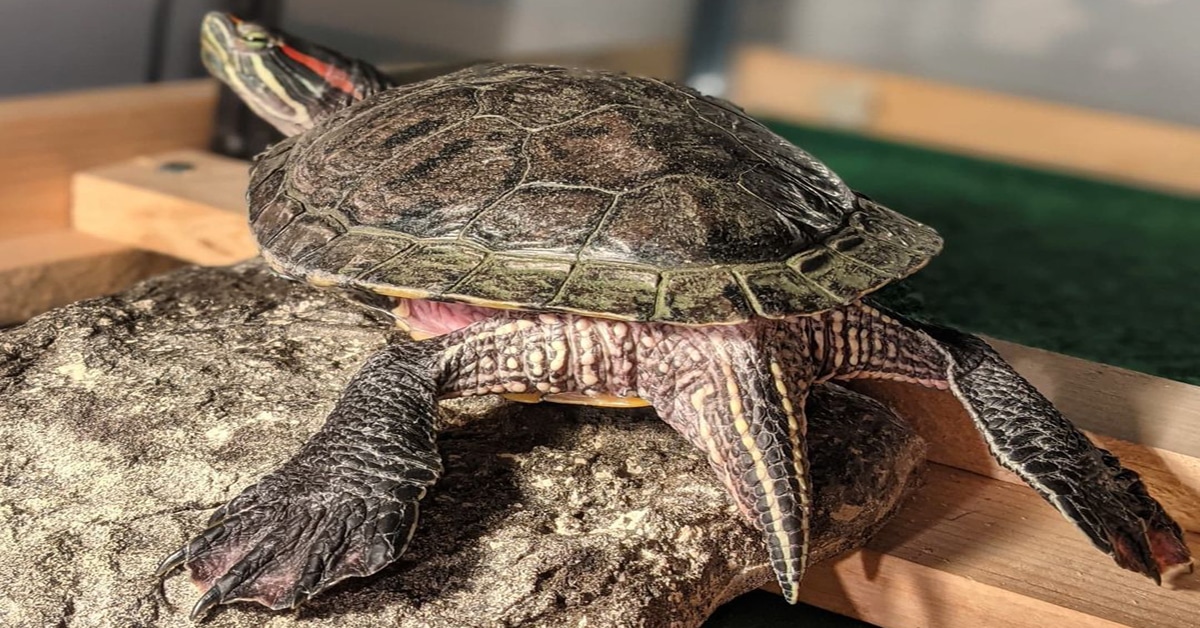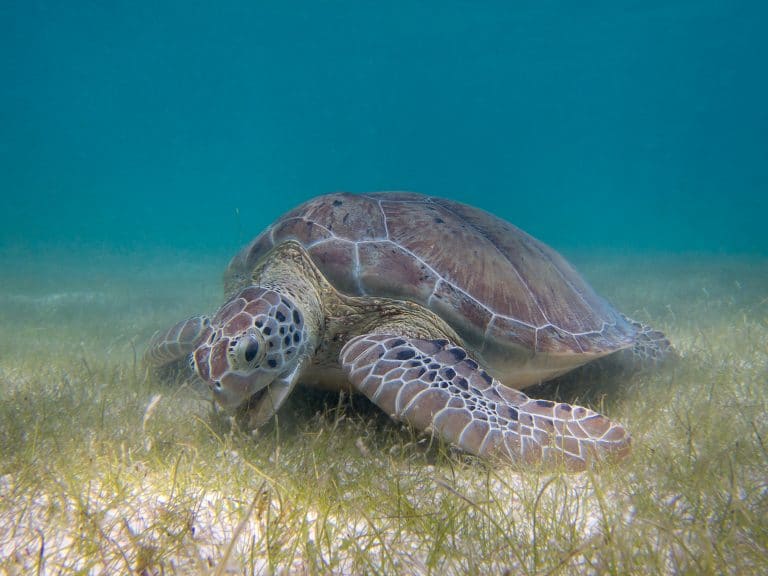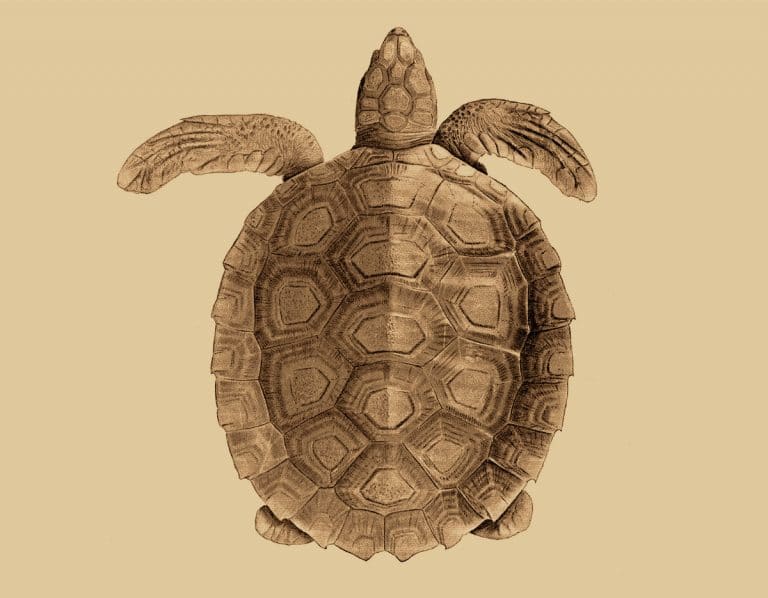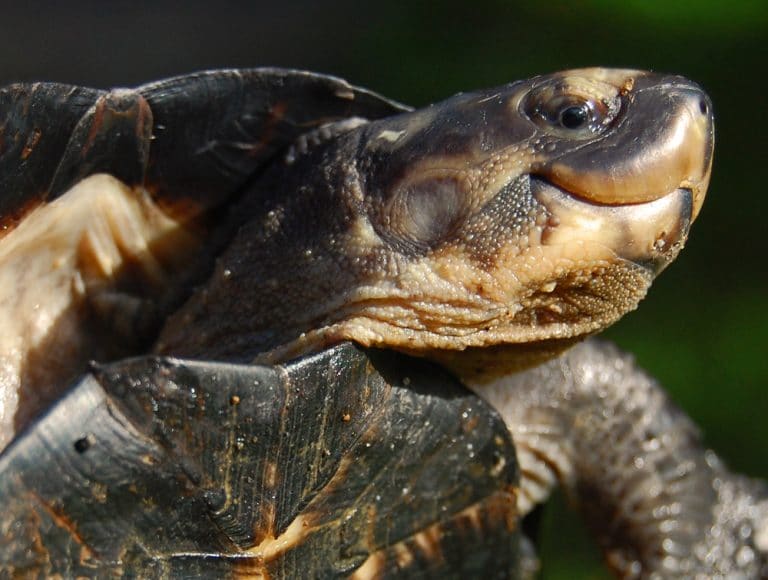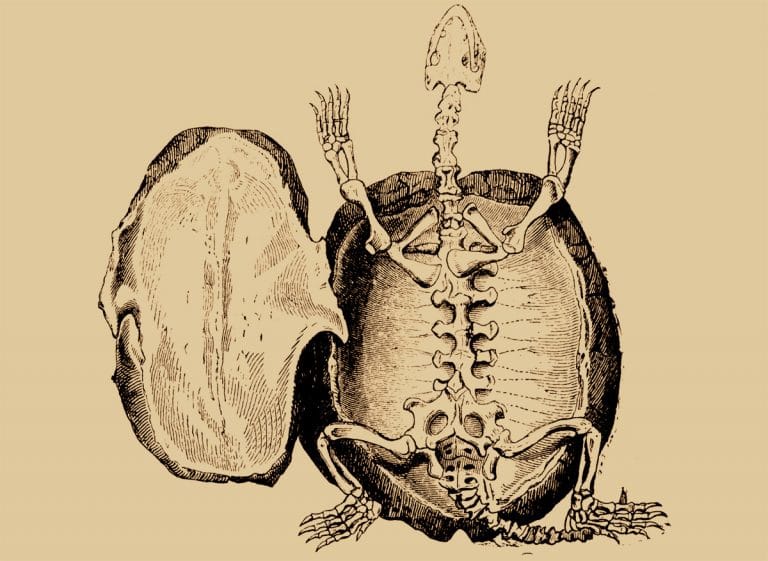Do Turtles Have Tails? – Exploration of Their Purpose & Uses
One of the most intriguing animal anatomy mysteries is that of the turtle. Those amazing creatures are among the earliest and most primitive families of reptiles. Therefore, since the majority of reptiles have tails, it is obvious that you may wonder- do turtles have tails?
It turns out that all 360 species of turtles, both land and marine, have tails, though the shape differs from species to species. Let’s explore the intriguing world of turtle tails today and discover why do turtles have tails.
Do Turtles Have Tails?
The main question of our article is – do turtles have tails? Well, all turtle types have a tail, whether they reside on land or in water. The spines of turtles are shorter than those of other animals. Individual differences exist in the precise dimensions and thickness of the ends. The breed and gender of the turtle affect the form of the tail.
Male turtles typically have bulkier, longer tails than female turtles do. The species with the longest fins, though, are the Snapping Turtle and the Big-Headed Turtle. Their tails, which are coated in bone plates, are nearly as long as their shells, if not longer. Snappers typically use their fins to stabilize themselves while walking uphill.
The present varieties of turtles are the result of millions of years of evolution. They have lost a lot of their usefulness during this period. Turtle forebears had spikes on their tails in ancient times for protection. In contrast, their contemporary peers lack this trait. Nevertheless, many turtle species have spikes on their tails that essentially accomplish the same thing.
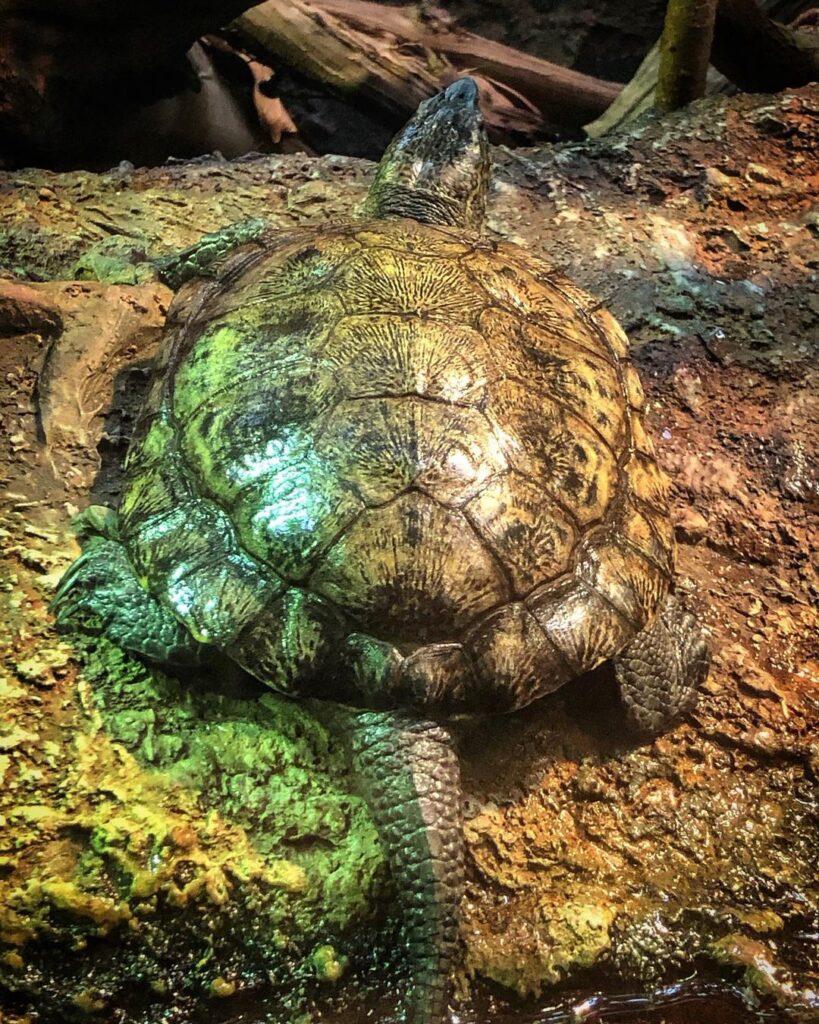
Turtles With the Longest Tails
After finding out that indeed do turtles have tails, it is obvious if you wonder which species have the longest tale. The snapping turtle and the big-headed turtle have the largest and longest tails of all the turtle species. The snapping turtle and the big-headed turtle are linked. They used to be members of the snapping turtle species, and they mimic snapping turtles.
The big-headed turtle’s tail can grow to a length of 6 to 7 inches. The Chelydridae turtle family includes snapping turtles. Alligator snapping turtles, Suwannee snapping turtles, Central American snapping turtles, and common snapping turtles are some of these species.
These tortoises all have very long tails. Typically, their tails are almost as long as they are. Since the tail is typically almost as long as the carapace, the longer the snapping turtle, the longer its tail will be. The alligator snapping turtle, which is native to North America, is the biggest species of snapping turtle.
The shell of the alligator snapping turtle grows to a length of 14 to 30 inches, so their fins are typically the same length.
Why Do Turtles Have Tails?
Surprisingly, turtles’ tails serve multiple purposes. Let’s discuss the various functions of turtles’ tails and explore why they are such an essential feature of these fascinating creatures.
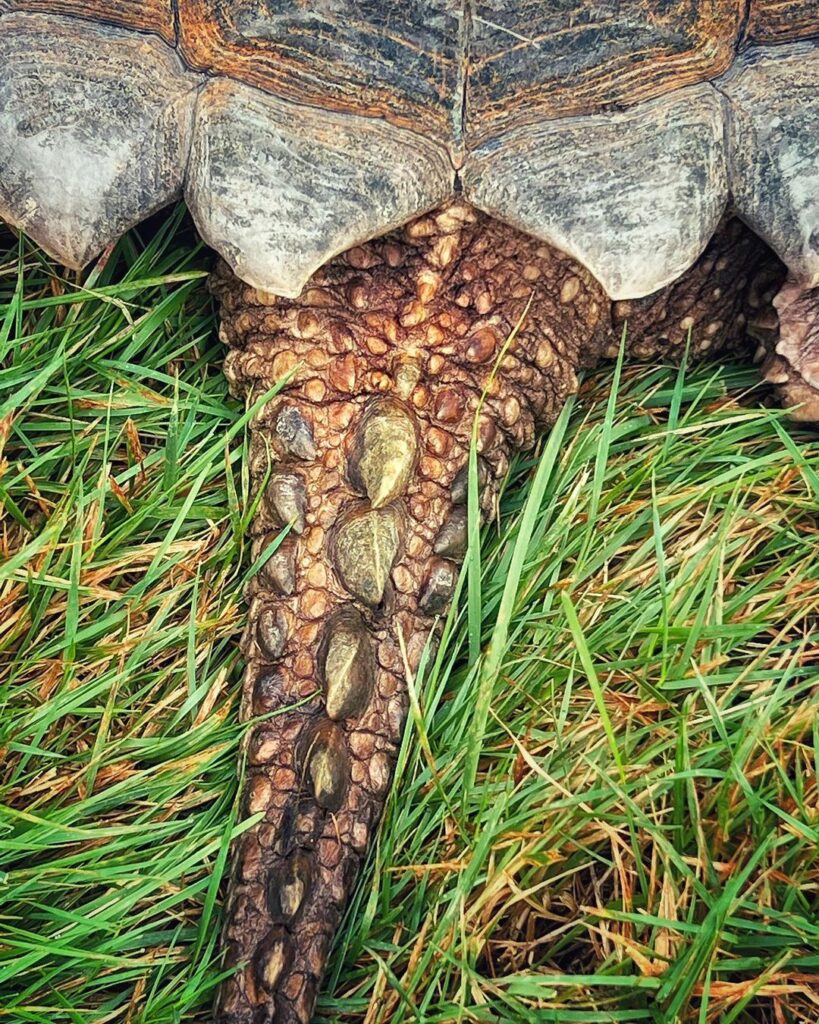
Role of the Tale in Reproduction
We already answered the main question of whether do turtles have tails or not. But did you know that the tail was also used for reproduction? Eventually, the reproductive glands are present in male turtles.
The male sexual apparatus of a turtle is located in its tail. Additionally, the female sexual orifice is concealed. The female raises her tail either upward or to the side during coupling. This is done to make the cloaca more visible and available to the male.
Regardless of the turtle’s gender, the point of the tail is vulnerable. As a result, finding the female turtle’s cloaca is typically difficult for the male turtle. However, they can find the entrance and direct themselves there by using the sensitive point to scan the area.
The male turtle’s tail develops quickly as it reaches reproductive development. At this stage, males typically have tails that are several times bigger than those of females of comparable size. This process of reproduction is one of the main reasons why do turtles have tails. The males also access the cloaca with the aid of their spines. By doing this, the male’s sperm will be effective in fertilizing the female’s embryo. Once they’ve located it, breeding can start.
The tail of marine turtles is a little bit prehensile. This implies that they can snag objects with it. The male marine turtles use this skill to mount the female, secure her against the water’s currents, and finish insemination.
The turtle’s tail also serves the passive function of shooing away other possible partners during reproduction. During mating, the male’s larger and thicker tail covers the female’s cloacal entrance. This makes it impossible for other males to sexually reproduce with the same female.
Cover for Cloaca
One of the reasons why do turtles have tails is for the protection of the cloaca. Aside from coupling, females conceal their cloaca with their tails. Males also have cloacas, so it’s not just females. The cape has several uses. The cloaca allows for sexual activity in both males and females because both sexes must draw their cloacas together before the male can put the penis into the female’s cloaca.
During nesting, females also discharge their embryos through the cloaca. The cloaca is used by both sexes to secrete feces.
Balance & Movement
Other than those mentioned above, there is also one significant reason that explains why do turtles have tails.
The animal’s tail doesn’t play a significant part in its locomotion, unlike other animals like mammals, fish, and even other snakes. The tail is vital to many creatures’ motions, including crocodiles, cheetahs, and many others. Many aquatic animals, including alligators, use their tails to help them move.
However, the turtle’s spine aids in keeping its equilibrium on rocky ground. The majority of freshwater turtles like to sunbathe on boulders and anything else that protrudes out of the water, like driftwood and tree limbs.
Protection
The first thing that comes to mind when discussing safety with turtles is their hard shell. In addition to protecting them, the turtles’ shells distinguish them from other animals. We don’t realize it, but turtles’ tails also serve a significant protective function. In the natural environment, tortoises navigate slick terrain.
The turtles can balance themselves and anchor through the boulders and difficult ground thanks to their lengthy tails. The tail of a female turtle serves to shield the vents in addition to providing a secure hold on the ground.
Lifting Turtle By Its Tale
Sadly, damage to companion reptiles’ tails happens frequently. A novice pet owner will frequently try to raise a turtle by the tail.
Minor wounds on the tail will ultimately recover. If a tortoise suffers a tail injury, the owner might need to visit a licensed herp veterinarian. If the injury is serious and not just a minor laceration, it is crucial to see an experienced herp veterinarian. The tail should recover quickly with therapy and attention.
While severe injuries can take up to a year to recover from, most tail injuries should heal within a few weeks. However, the tortoise should never be lifted by the tail.
When you try to manage a snapping turtle, this can be enticing. When they are out of the ocean, they have enormous tails and are violent creatures. Although it may be enticing, it is improper to grab someone by the tail. Never lift a reptile by the tail if you want to relocate it from a road where it is traversing. Lift it by the base instead.
Does The Turtle Tail Regrow?
If your turtle nips its tail or injures it accidentally, you might be curious as to whether the tail will eventually grow back. The sad truth is that once wounded, tortoises are unable to grow their tails back.
With the right treatment and medicine, a wounded or hurt tail could, however, make a small recovery. Unfortunately, if the tip has been damaged or removed, the complete tail will never grow back to its original height. Scar tissue, however, will eventually fade and become less visible as incisions recover.
While a serious injury might require a year to fully recover, a lesser injury might do so in a few weeks. The good news is that after it, the turtle will have fully recovered the tail’s functionality.
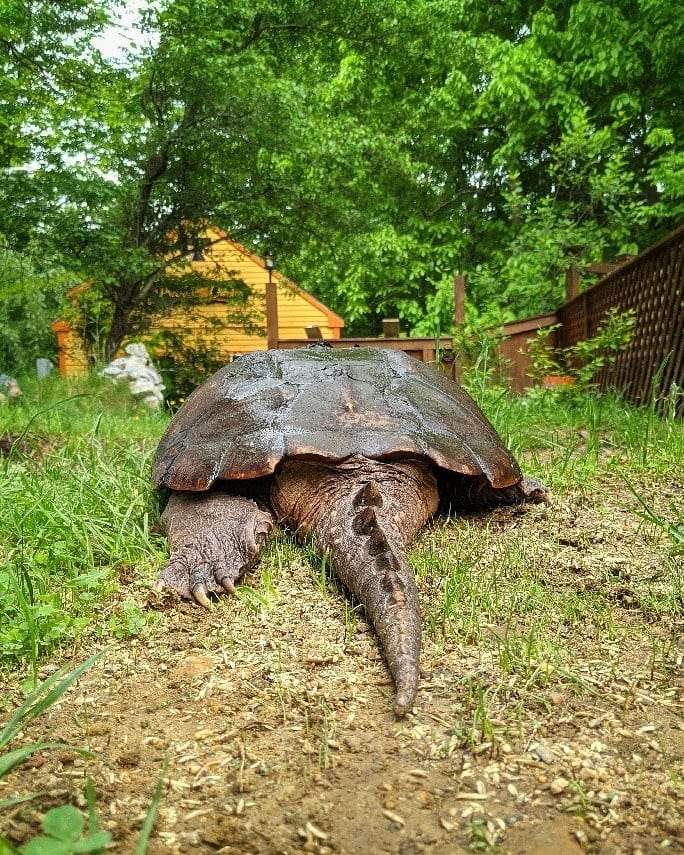
Can Turtles Survive Without a Tail?
We now know for sure that the answer to the question “do turtles have tails” is indeed positive. However, in case of an accident, can they survive without it? A turtle that loses its tail will never be able to develop back to its previous splendor. Does this imply, however, that a turtle cannot survive without a tail?
Even a turtle missing a portion of its spine can live a long and robust life. As long as the turtle’s cloacal orifice is unharmed, this is acceptable. The turtle will die from toxic waste piling up in its body if the cloaca is injured because it will be unable to discharge pee or excrement.
However, a male turtle without a tail will never be able to breed or procreate. This is because losing the tail also means losing the reproductive system.
Bottom Line – Do Turtles Have Tails?
In the article above, we explored the question, “Do turtles have tails?” and discovered that all turtle species do indeed possess this vital feature. As we have seen throughout the article, a turtle’s tail serves numerous purposes, which makes it a critical component of its existence. Since male turtles store their reproductive organs in their tails, the tail is crucial to the longevity and survival of the species.

Nato is a content writer and researcher with a background in psychology who’s eager to explore the wonders of nature. As a travel enthusiast and animal lover, she hopes to inspire others to discover and cherish the beauty and importance of the natural world.

